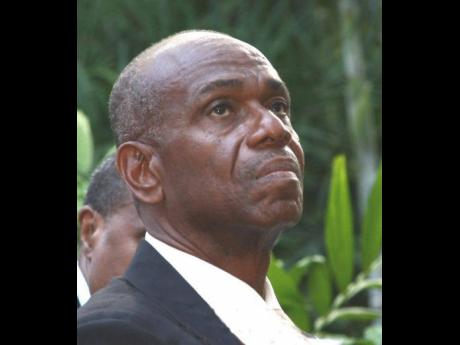Lascelve 'Muggy' Graham | Narratives of colour blindness
The murder of George Floyd by a policeman in the USA gave rise to worldwide protests and an awakening and consciousness re race that hitherto, had been unknown to many of us. It has energised a number of actions, including where monuments, symbols in the USA and Europe, that many had been trying for decades to no avail to have removed, were suddenly taken down. States in the US are seriously discussing defunding their police departments and putting in place other more appropriate social structures.
By way of social media, it has proven to be quite an education, an eye opener for me, with certain ideas coming to the fore. First, it emphasises the critical role of history in the attempt to move forward with justice. Second, it highlights the pivotal function of education, scholarship, knowledge in the fight for freedom; the importance of disseminating information; and the importance of the media and the arts (eloquent, agile, able historians, social scientists, legal minds, etc). This underscores, for example, the fact that although the S.T.E.M subjects are important, necessary in the delivery of quality education to our children, they are not the be-all and end-all. They are not sufficient in this fight for justice and equity. Third, it also accentuates how intrusive politics is in all our lives. Politics sets the tone of our lives.
I have read many articles and listened to a number of videos on different aspects of the race issue in the USA. I found quite a few interesting, and among other things, learnt in much more detail about the torture, rape, the humiliation, the lynchings and massacres of black people at Wilmington, Atlanta, Elaine, Tulsa, and Rosewood, and also about redlining in housing, including the Levittown stipulation. However, I was particularly impressed by a video featuring Professor Tricia Rose of Brown University titled “How Structural Racism Works”.
INTERWOVEN INTO SOCIETY
The presentation disclosed that racism is intimately and intricately interwoven into the very fabric of the society and that it is pervasive, normalised, and so effective that many black people accept it, as do many “good” whites, unaware of how brainwashed they are. She showed that the form, the appearance of structural, systemic racism keeps evolving, changing, is dynamic, and has morphed from slavery through redlining in housing to subprime lending, etc, etc, and so it becomes more difficult to recognise and deal with.
Structural racism
She looked at the history and current application of structural racism by way of five headings: housing, education, mass media, wealth/jobs, and criminal justice. She showed how they are inter-related and work together to achieve the desired racist outcomes, the enhanced value of whiteness, and the devaluing of blackness. In the building of Levittown, for example, the Federal Housing Administration demanded that the developers to whom they lent money not sell houses to black people, and in general, black people have found it very difficult to get loans of any kind, and in particular, home loans.
This, of course, results in poor housing for black people, which cascades into ghettos, which results in poor schools, which, along with other discriminatory measures, results in a lack of jobs. On top of that, the criminal justice system unfairly targets black neighbourhoods, e.g. Ferguson, which were systematically segregated, with the concomitant police brutality and murders as well as a high percentage of young black men being charged for felonies and being incarcerated for long periods, which further rules them out of a number of benefits for the rest of their lives. All of these things, along with white cultural practices, ensure that black wealth is minimised, and that blackness is stigmatised. She also looked at the theory behind colour blindness and how it serves to perpetuate racism.
As I listened to Professor Rose, it struck me that a number of the outcomes she mentioned seem to exist in Jamaica. We find that so many of our people are unable to access proper housing. Our education system, and hence our schools, has been described with frequency as apartheid. There is clearly a lack of opportunities, jobs, especially for our young people. Poverty is, of course, all around us. There are, ever so often, outbursts about police brutality as well as the level of crime in our communities.
Bleaching is the embodiment, the extreme manifestation of the valuing of whiteness and the devaluing of blackness. The narrative of colour blindness is also rampant in Jamaica. With these parallels, notwithstanding the differing demographics, with black people being the overwhelming majority in Jamaica, as they are in South Africa, I wonder if structural racism is a feature here, and if so, to what extent, and how does it manifest itself? What are the forms in which it exists?
- Dr Lascelve ‘Muggy’ Graham former captain, senior national football team. Send feedback to columns@gleanerjm.com.

